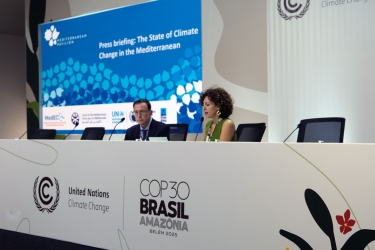In the face of threats to our forests, let's increase cross-border collaboration!

Human borders seek to define the territories managed by our national or regional governments. However, these borders do not, in any way, represent a barrier to pests, diseases, fires or windstorms that hit forests. Factors such as increased trade or global changes facilitate the spread of pathogens or cause forest fires to become increasingly widespread. In short, the probability that these threats cross borders, from one territory to another, is increasing. In addition, the lack of knowledge or resources in a region can cause a threat to spread to neighbouring regions. And, when this happens, the lack of a predefined strategy for coordination between the response teams on both sides of the border means losing precious time, which could be used for combat or eradication.
In this scenario transnational projects emerge, such as PLURIFOR (Transnational Plans for the Management of Forest Risks, coordinated by the European Forest Institute) or COOPEREM (Operational emergency cooperation and fire prevention, coordinated by the Department of the Interior of the Generalitat de Catalunya) which, benefiting from the support of the Interreg Europe program, join efforts on both sides of the border to exchange solutions and coordinate the management of risks and threats to forests, whilst at the same time preparing the leaders for a better job in an international team.
Thanks to the conference organized within the framework of the SuFoRun project (Models and SUpport tools for integrated FOrest policy development underglobal change and associated Risk and UNcertainty, financed by the H2020 program and focused on the exchange of knowledge on the management of forest risks) in June 2018, both projects knew about each other and, in January of the following year, they had their first meeting to exchange ideas. During the meeting, researchers and managers realized that their methodology had been similar, starting with identifying the needs for improvement in the cross-border management of threats, prioritizing the most necessary ones, finding the most appropriate solutions, developing them and transferring them to the decision makers, either to the forestry authorities in the case of PLURIFOR or to the firemen in the case of COOPEREM.
Until this meeting, the work of both projects (financed by two INTERREG programs with different fields and areas of action) was carried out in parallel, despite dealing with the same issue in the same countries (France and Spain). The question is, if they had been discovered earlier, what synergies and exchanges could have been created? Or, more worrying still, what other similar projects exist today and of which there is no record? Just to give an example, the COOPEREM team which wishes to develop a collaboration agreement between firefighters of the province of Girona (Spain) and the department of Pyrenees Orientales (France) knew, thanks to the PLURIFOR team, that such an agreement has existed between Portugal and Spain for years, and that it could serve as a model.
Situations like this could be avoided through forums where projects covering the same theme could be mutually informed about each other. This is one of the reasons to develop a European Forest Risk Facility (an initiative coordinated by EFI): A European network to connect, collect and exchange knowledge on forest threats and risks. Do not reinvent the wheel but take advantage of the knowledge or experiences that neighbours may have, and establish collaboration agreements prior to an emergency that will affect both sides of the border. It may seem obvious points but a place for people to collaborate is needed so that matters are not just left down to luck, or worse, for when the pests or flames from a neighbouring forest devour our own.
Photo: uniquedesign52, Pixabay


